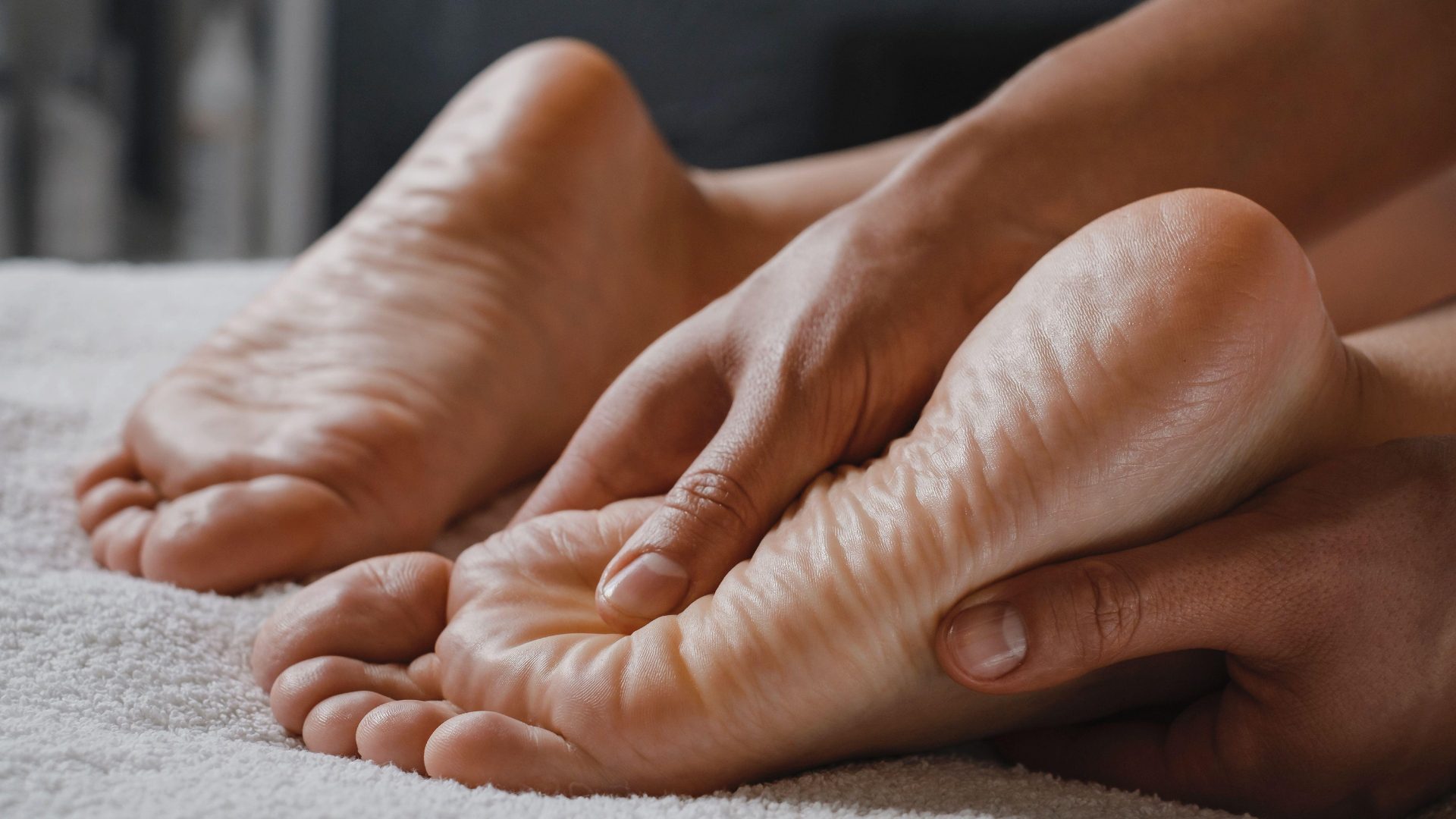
Foot massage is more than just a relaxing treat — it’s a therapeutic practice that has been used for centuries in various cultures to promote overall well-being. Whether done at home or by a professional, foot massage can help relieve tension, boost circulation, and support both physical and mental health. Understanding the right techniques and their benefits can help you make the most of this simple yet powerful wellness practice.
Table of Contents
Common Foot Massage Techniques
Different techniques target various areas of the feet to promote relaxation and improve circulation. Here are some of the most effective methods:
-
Thumb Walking: Use your thumbs to apply gentle pressure, moving slowly from the heel to the toes. This technique helps loosen tight muscles and stimulate nerve endings.
-
Circular Motions: Make small, slow circles with your thumbs or fingers along the arches and balls of the feet to reduce stiffness and encourage blood flow.
-
Toe Stretching: Gently hold and pull each toe to stretch the joints and relieve tension. This can also improve flexibility in the toes.
-
Heel Kneading: Apply firm, rhythmic pressure to the heels with your knuckles or thumbs. This technique is especially useful for people who stand for long hours.
-
Top of Foot Strokes: Use smooth, gliding strokes over the top of the foot to relax surface muscles and calm the nervous system.
These techniques can be combined for a complete, balanced massage that targets every part of the foot.
Health Benefits of Foot Massage
Regular foot massages offer a range of physical and mental benefits, making them a valuable part of a self-care routine:
-
Improved Circulation: Gentle pressure and movement encourage better blood flow, which can be especially beneficial for people with diabetes or circulation issues.
-
Pain Relief: Massaging pressure points can help alleviate foot pain, plantar fasciitis discomfort, and tension from standing or walking.
-
Reduced Stress and Anxiety: Foot massage activates the parasympathetic nervous system, which helps lower stress levels and promote relaxation.
-
Better Sleep: A calming foot massage before bed can ease the body and mind, improving sleep quality.
-
Enhanced Mood and Energy: By releasing tension and stimulating nerve endings, foot massage can lift mood and boost overall energy levels.
When to Be Cautious
While foot massage is generally safe, there are situations where caution is necessary. People with open wounds, infections, fractures, or severe foot conditions should avoid massage or consult a healthcare professional first. Those with circulation disorders, diabetes, or pregnancy-related concerns should also seek professional guidance to ensure safety.
How to Incorporate Foot Massage Into Your Routine
You don’t need to book a spa appointment to enjoy the benefits of foot massage. A few minutes of self-massage at home can make a difference. Try massaging your feet after a long day, during your nighttime routine, or even as part of your morning wake-up ritual. Using warm oil or lotion can enhance the experience and help your hands glide smoothly over the skin.
Foot massage combines relaxation with real health benefits. By learning a few simple techniques and practicing regularly, you can reduce stress, relieve discomfort, and improve your overall well-being. Whether performed by yourself or a professional, foot massage is a simple yet powerful way to take care of your body and mind.


